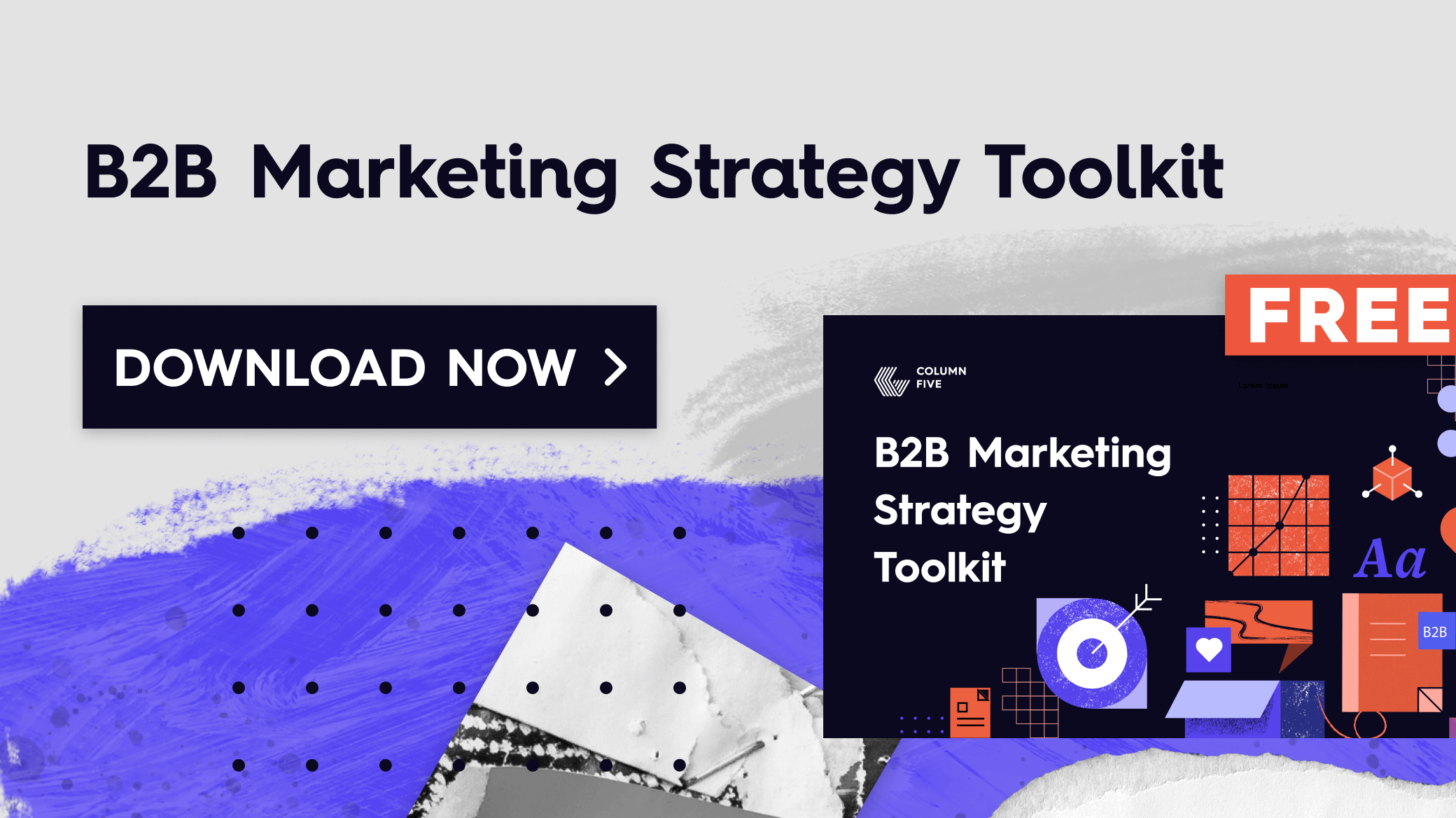B2B marketers love to talk about how tech companies need to humanize their brands to truly connect with their customers. (Heck, we’ve talked about this ourselves.) But when we see tech brands in the wild, there is often a gap between their intent to humanize and how they execute this idea. Lately, it seems that most tech companies equate human-centric marketing with…images of humans. We see this epidemic everywhere.
- The smiling faces on a robotics pamphlet
- The whimsical illustrations on a SaaS site
- The goofy behind-the-scenes post at a giant tech company
None of this imagery is inherently wrong, but it often feels like a surface-level attempt to fulfill a deeper need. Your customers aren’t looking for pictures of people; they’re looking for emotional connection. That is the humanity you should be cultivating.

What Does Humanizing Your Brand Really Mean?
The most successful brands don’t just paper their homepages with smiling faces; they tap into the human problems they solve, the human desires they fulfill, etc.
Nike pairs their imagery with inspiring calls to achieve personal greatness. Apple focuses on how their products enhance your life. Most importantly, both brands listen to their customers and provide value through products/experiences. These brands feel inherently authentic, which is why people are drawn to them.
Tech brands often miss the mark on this, and they often blame it on the nature of what they sell (B2B or SaaS products/services). Although these things may not feel as sexy as, say, lipstick, all purchases are inherently emotional. (BTW, the idea that B2B buying isn’t emotional is one of the biggest marketing myths of all time.)
Whether it’s a high schooler buying her senior prom dress or a CMO purchasing a new automation platform subscription, people buy things because they feel that life will be better after they swipe their card.
All this to say, you don’t need to sell a sentimental product/service to relate to people as people. If you want to humanize your brand, you just need to create meaningful emotional moments. Content is the best way to do that—if you do it the right way.
The Secret to Humanizing Your Brand: Strong Storytelling
Competition is fierce in the tech world, and it will only become worse. Nowadays, one of the only ways to stand out is to tell a brand story that people emotionally connect to. But, again, a whimsical illustration of an engineer is not the fast pass to that connection.
Instead, tell stories that make your customers feel seen and known—that’s how you win their hearts. Luckily, there are a few ways to do that.
1) Know your audience’s emotional drivers.
It’s not just about the problem your audience is looking to solve. Think about the human emotions you want them to feel. How should they feel after they’ve used your product/service? How should they feel at different points along the buyer journey (e.g., excited, relieved, curious)?
Tip: Download our guide to create tech marketing personas and ideal customer profiles, which will help you document these emotional drivers and adjust your buyer journey accordingly.
For example, if you’re a security software company, you probably want people to feel safe and relieved that they have your protection. How can you make them feel that from the moment they land on your homepage or download an ebook? The more you demonstrate that you know what they’re going through and infuse that empathy into the customer experience, the more they will trust your brand.
2) Connect everything to your brand story.
Your brand story is the reason you exist. It is who you are, what you do, and why you do it. The best brands are able to bond with their audience through that story. If you know your brand heart (aka purpose, vision, mission, and values), you can tell stories that create shared human experiences.
Tip: Download our free brand heart workbook to identify your purpose, vision, mission, and values.
For example, Hummingbird is on a mission to help financial institutions fight financial crime using better communications and technology. Their homepage copy doesn’t feature clunky language about secure systems. Instead, they use human-centric language, saying their tech is “Designed and built for the true heroes of the financial industry.” The word “heroes” is an emotional aspiration, inviting potential customers to become one too. (See our tips to write more emotional copy like this.)

3) Create moments of joy.
Humans like to have fun, even when they’re tasked with boring things. The more you can infuse your content with fun, humor, or unexpected surprises, the easier it is to foster an emotional connection.
Think about common problems you can turn into inside jokes. Look for ways to sass up your CTAs. Take any and every opportunity to add a hit of delight to someone’s day.
Tip: Take a look at our roundup of B2B videos that are anything but boring. These are great examples of ways you can tell your brand story and stand out from the crowd.
For example, Mailchimp does this well. They have a fun, playful energy (including Freddie, their chimp mascot), and they create a range of content that reflects this. From their quirky ads to helpful podcasts, they aim to energize and entertain their audience as often as possible.
Remember: Lead With Your Humanity
One last thought: While your brand story should be the foundation of your content marketing efforts, people will only truly respond if that story is authentic. It doesn’t matter how slick your branding is or how much you push a specific narrative. If you can’t follow through on that story for your employees or your customers, it simply won’t cultivate the emotional connection you want.
That said, it’s also important to remember that showing your true humanity is never a flaw. Being honest and vulnerable can be the key to navigating tough situations, especially when you fail or make a mistake.
Remember: If you put people first, lead with empathy, and show your humanity from the beginning, you will build the community you need to achieve lasting success.
P.S. If you need a partner to help rethink the way you tell your brand story, let’s talk about how we can help you create the right content to reach the right audience.





